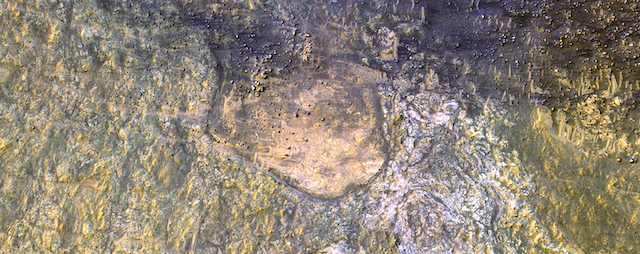 HiRISE has often imaged inside Kaiser Crater to monitor active sand dunes and gullies. Surrounding these dunes, we often find clean bedrock exposures, because the actively moving sand clears off the dust.
HiRISE has often imaged inside Kaiser Crater to monitor active sand dunes and gullies. Surrounding these dunes, we often find clean bedrock exposures, because the actively moving sand clears off the dust.
Kaiser Crater is 207 kilometers wide and was named after Frederik Kaiser, a Dutch astronomer (1808—1872).








